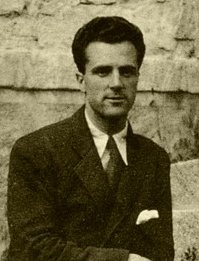Miguel A. Catalán facts for kids
Miguel Antonio Catalán y Sañudo (born in 1894, died in 1957) was an important Spanish scientist. He was an expert in spectroscopy, which is the study of how light interacts with matter. This helps us understand what things are made of and how they behave.
About Miguel Catalán
Miguel Antonio Catalán y Sañudo was born in Zaragoza, a city in Spain. He studied chemistry at the University of Zaragoza. In 1917, he earned his doctorate degree in Madrid. His special project was about spectrochemistry, which combines spectroscopy with chemistry.
In 1920, he started working as a researcher in London, England, at Imperial College London. He studied the light given off by manganese (a type of metal). He discovered that the light from complex atoms showed special patterns. He called these patterns "multipletes." Catalán showed that by studying these multipletes, scientists could learn more about how electrons move around inside atoms. This was a big step forward in understanding atoms!
Working with Other Scientists
Because of his amazing work, a famous scientist named Arnold Sommerfeld invited him to work at the University of Munich in Germany. Later, in 1930, a new science center was created in Madrid, Spain. It was called the Institute of Physics and Chemistry, and Miguel Catalán became the head of the Spectroscopy section there.
He was also invited many times to work in laboratories in the United States. He visited places like the National Bureau of Standards in Washington, D.C., Princeton University, and MIT.
Miguel Catalán wrote more than 70 scientific articles. These were published in special science magazines. He won several awards for his work. In 1926, he received a prize from the Real Academia de Ciencias (Royal Academy of Sciences) in Spain. In 1930, he won an international award called the Pelfort prize.
He married Jimena Menéndez-Pidal. Her father, Ramón Menéndez Pidal, was the director of the Royal Spanish Academy. During a difficult time in Spain, after a military coup in 1936, Miguel Catalán and his father-in-law faced many challenges.
From 1950, he led the Department of Spectra at the Institute of Optics in Madrid. In 1952, he became an advisor for a group that guided spectroscopy research. In 1954, he became a member of the Real Academia de Ciencias in Madrid.
Miguel Catalán passed away in Madrid.
Miguel Catalán's Legacy
Miguel Catalán's contributions to science are still remembered today.
- A lunar crater on the Moon is named Catalán in his honor.
- A scientist named Gabriel Barceló, who was a student of Miguel Catalán, later developed the Theory of Dynamic Interactions. This theory was based on some of Miguel Catalán's ideas about how things spin and move.
- The government of the Comunidad de Madrid (a region in Spain) gives out the Miguel Catalán Investigation Award in Science every year since 2005. This award celebrates his memory and honors scientists who have done outstanding work in research. Winners receive a medal, a special mention, and 42,000 Euros. Some past winners include:
- José Elguero Bertolini (2005, a chemist)
- Antonio Hernando Grande (2006, a physicist)
- Amable Liñán Martínez (2007, an aeronautical engineer)
- José Luis García Fierro (2008, a chemist)
- Miguel Francisco Sánchez Madrid (2009, a biologist)
Since 2008, there is also a Miguel Catalán Investigation Award for younger researchers (under forty years old). These winners receive a medal, a mention, and 21,000 Euros. Their institutions also get 50,000 Euros to help fund their future research. Some winners of this award are:
- Oscar Fernández Carpetillo (2008, an oncologist)
- Luis Raúl Sánchez Fernández (2009, a physicist)
See also
 In Spanish: Miguel Catalán Sañudo para niños
In Spanish: Miguel Catalán Sañudo para niños


